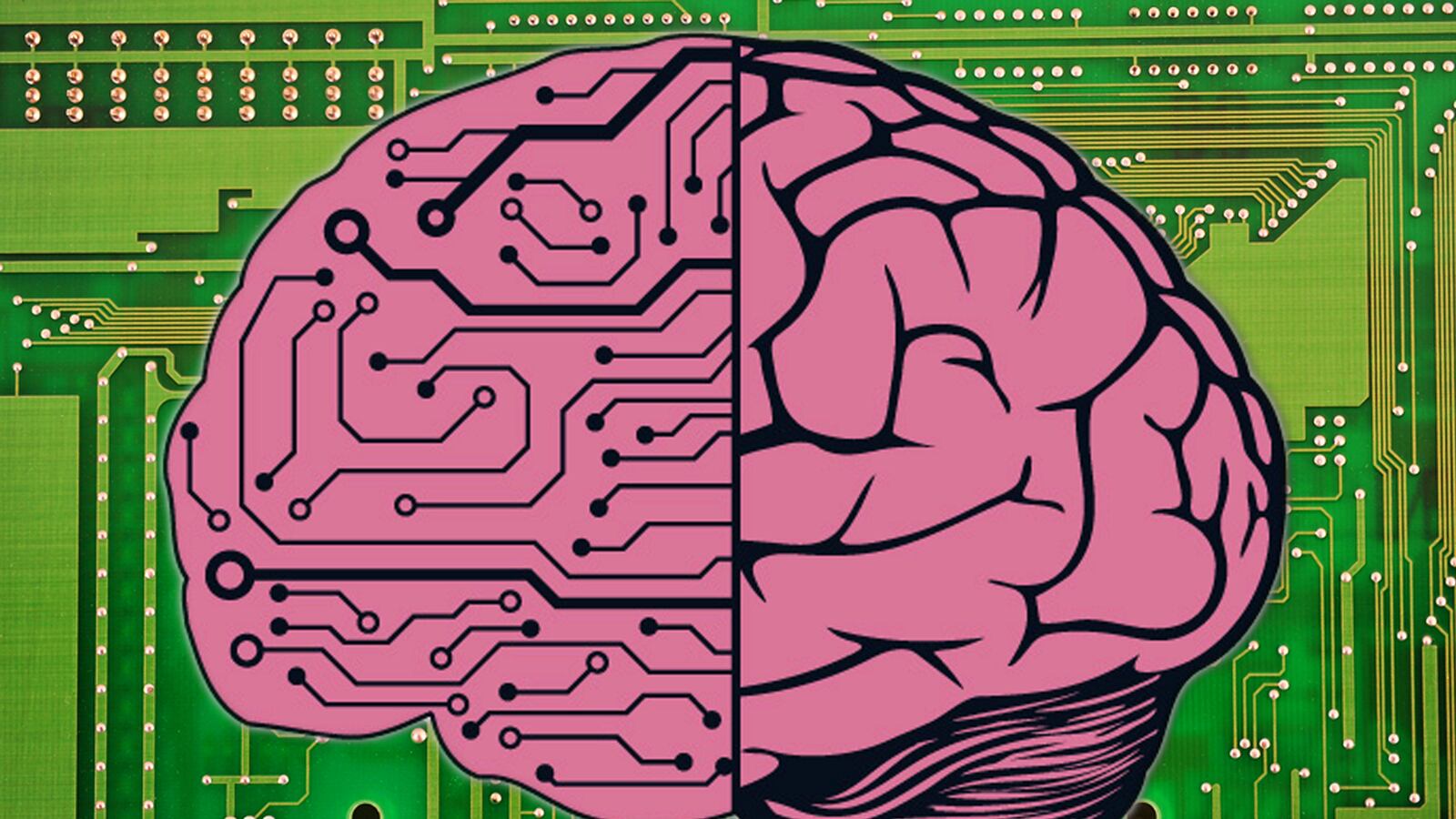Researchers at Stanford University recently announced the development of a circuit board that mimics the behavior of the human brain, producing much greater processing power than typical PCs while using much less energy. The “Neurogrid” circuit, as it’s called, replicates the processes of 1 million human neurons. The results yield computer chips 9,000 times faster than a run-of-the-mill computer, using only the power of a tablet PC.

By combining 16 “Neurocore” microchips, the researchers have reached a new benchmark in computer-brain simulation. Previous attempts to simulate brain processes used software, silicon chips, or a combination of both. But the “Neurogrid” process comes from combining analog computing processes with digital ones, Kwabena Boahen, one of the lead researchers on the project and an associate professor of bioengineering at Stanford, told The Daily Beast.
“Analog computing is nothing new,” Boahen said. “These computers have been in development since the 1940s. Digital computation has been in development almost as long. However, the hybrid approach is quite original. With the combination of the two, we’re able to successfully model a billion synapses.”
Boahen noted that neurons in the brain take in input from many other neurons. “This is how analog computing works,” he said. “It’s a summing technique. It’s like many water pipes coming together into a single channel; an analog process amplifies input by eventually spilling over the top of what you might call ‘the dam.’ At this point, the output becomes the digital, discrete signal. It’s either a 1 or a 0.”
Silicon chips are typically two-dimensional, Boahen explained, limiting the number of dedicated currents they can utilize. In other words, it’s a largely linear process. However, the brain behaves in a three-dimensional manner, wherein many neurons can fire simultaneously—this is where the combination of analog and digital processes comes in.
The potential for uniting the Neurogrid with actual human processes is vast, the researchers note. Last week, Jason Silva wrote about transhumanism, or rather, “our need to grapple with the implications of a world sustained by increasingly powerful technologies, and a redefinition of what it means to be human.” Silva noted the increasing presence of techno-human interaction in mainstream thought, as in films like Her, Robocop, and Transcendence. While comparing this consciousness to the swift advancement of technology—“more change has occurred in the last 100 years than in the last billion,” he wrote—the gap between humanity and technology is closing every (nano)second. The Neurogrid seems to prove these Hollywood fictions are becoming closer to fact.
For now, the Neurogrid is not meant for any kind of consumer prospect; rather, its development by bioengineers—not computer scientists—is meant specifically to model the human brain. Even to put the technology into the hands of electrical engineers (or anyone besides those who intimately know the workings of neurons) would not be immediately fruitful.
“This project has two key features,” Boahen said. “The first is following the organizing patterns of the brain: how it transmits and outputs data. The second feature is how to translate the technology efficiently: how to harness the power of this device for practical use. At the moment we’re quite a long ways away from putting it into another field.”
That’s not to say Boahen and his team aren’t working on that. In an article on the for the journal Proceedings of the IEEE, Boahen explained that a typical computer takes about 40,000 times more power to run than the human brain. “The human brain, with 80,000 times more neurons than Neurogrid, consumes only three times as much power,” he wrote.
Now, the goals of the researchers are to reduce even further the power the device needs, as well as lower its cost—currently at $40,000. If the power drain of the Neurogrid can be reduced enough to not overheat the actual human brain when they interact, it could be instrumental in applications like the advanced development of prosthetic limbs. A small prosthetic arm set up in Boahen’s lab reacts in real-time to the Neurogrid. If the technology advances further, prosthetic interaction with the human mind could look like something out of science fiction.
“We are no longer subject to Darwinian natural selection. Exponentially powerful technologies are transforming our sphere of possibilities. What it means to be human is up for grabs,” Silva wrote. “And why do we do this? To defy mortality. To extend our reach.”






